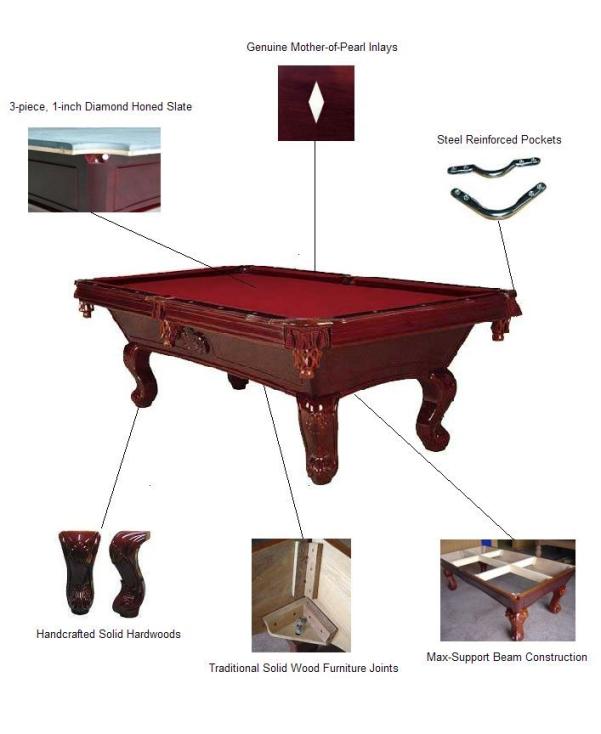
Cue’s leather tip should have a rough texture, not smooth. This is to allow the billiard chalk to stick to the leather. A tip should also be convex or “domed”. Pool cues should have the same curvature as a nickel, while snooker cues should be like that of a dime.There are many great products on the market that can help make maintaining your tip easy. Cue shapers such as a Williard or The Ultimate Tip Tool, shape and scuff your tip at the same time and have gauges to make sure you’ve got it right. If your tip only needs to be roughed up, and not shaped, a tapper is a great tool to use. These gadgets simply bring out the fibers of the leather without removing any material from the tip. The Tip Pik makes an excellent tapper, and there is one included on The Ultimate Tip Too
Cue Conditioning and Burnishing.
More than likely, your cue’s shaft is made from wood. Wood is a porous material, and all manner of dirt and oil can get trapped in these pores, which give your shaft a sticky feel. One way of fixing this is by closing the pores of the wood by burnishing. By heating up the cue with friction the pores in the wood close, preventing pesky molecules from getting lodged in them. To do this, use a smooth piece of un-dyed leather or Cue Slicker, which can be purchased at your local billiard supplier, and rub it vigorously up and down your cue’s shaft, while at the same time turning the cue.Products such as Q Slick negate the need of heat as it applies a sealant to the wood, effectively sealing the pores.
Are your cue tips “mushrooming”? Apply the same procedure to the edge of a leather cue tip. This should harden the tip’s outer edge and give it a clean glossy look. To accelerate the process a small drop of water can be used. Don’t have a small piece of leather handy? Use the green burnishing film from Q Smooth or a five dollar bill.
The Art of Chalking
Always chalk your cue by rubbing the chalk across the tip not grinding it into the centre of the chalk. This will help stop the cue ferrule from getting stained.How to keep a cue’s shaft looking and feeling like new.Burnishing your cue’s shaft helps prevent your cue from losing its slick finish, but what do you do when it stops gliding like it used to? There are several ways to help maintain your cue’s shaft. The easiest and least invasive way is by simply using a clean, non-abrasive cloth, such as a Karseal impregnated Cue Cloth. This will quickly remove most dirt and oil deposited on your cue, and should be done between games.
To remove buildup on a shaft, or to remove any small nicks or scratches, special sanding papers can prove useful. Products like Q Smooth, are micro-burnishing films that clean, smooth and burnish your shaft. For heavier dirt and chalk stained ferrules, Q Clean is the best shaft and ferrule cleaner available.
Often deeper dents in your shaft can also be repaired. By rubbing a glass or plastic rod over the dent rapidly, you can, in a sense, bring out the dent. By heating the cue with such friction, the wood expands.
Rather than taking down the rest of the shaft to match the dent, you are raising the dent above the shaft, then simply sanding down the newly formed bump to match the rest of the shaft.
How to protect your investment.
Having spent your hard earned money on a new possession, you would like to keep it safe, for the years of enjoyment ahead. Treat your new cue as you would a child. Never leave your cue in direct sunlight, extreme temperatures or humidity for extended periods of time. Your cue can be stored in your case, lying flat and level, in an upright rack, or hung straight up and down using a; cue hanger. While playing, never lean your cue against a table or wall and never use it to lean against. Products like Q Buddy or Cue Dude’s Portable Cue Stick Caddy, can be used to create a temporary rack to hold your cue in between shots.
Friday, January 4, 2008
Easy Step to Cue Maintenance Guide
Labels: Maintenance, Tips and Trick
Posted by admin at 3:22 AM
Subscribe to:
Post Comments (Atom)








0 comments:
Post a Comment